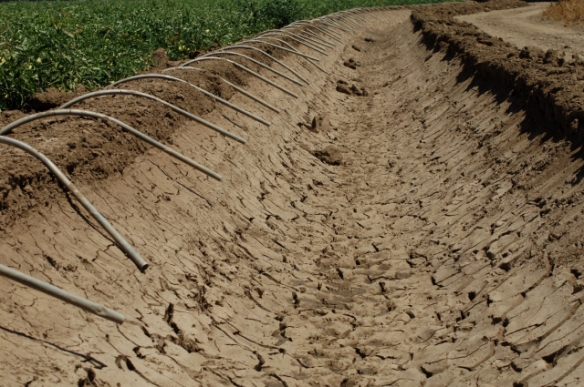Yesterday, saw the announcement by researchers at CIAT (a Spanish acronym for International Center for Tropical Agriculture) in Cali, Colombia, that they have identified bean lines with significant tolerance to heat stress. Some salient points:
1) With current varieties, increased average temperature under the predictive global climate change models would cause a decrease in suitable bean growing surface of 50% by 2050. With the improved varieties, this loss would only be 5%, whether in East Africa or Central America.
2) Perhaps paradoxically, the crucial stage sensitive to heat stress is night temperature. Current varieties do not tolerate very well night temperatures above 18 C (= 64.5 F). Advanced lines identified by CIAT scientists can tolerate night temperatures up to 21-23 C (= 70-73.5 F).
3) So, where do these advanced lines come from? Many of them result from crosses made 3 to 4 decades ago between common bean (Phaseolus vulgaris) and tepary bean (Phaseolus acutifolius). Tepary bean is a species native to the US Southwest and Mexico. It is one of the five domesticated Phaseolus bean species. It withstands high temperatures in its native habitat.
4) Crossing common and tepary bean is not easy. Once can obtain progenies by brute force [e.g., trying > 1,000 times ;>(( ] or a laboratory technique called embryo culture. The same tepary bean has also provided outstanding resistance to the pathogen Xanthomonas campestris, the causal agent of common bacterial blight, a major bean pathogen.
Related stories:
Developing Beans that Can Beat the Heat (pdf)
Turning down the heat: breeding beans for a changing climate
New Climate-Smart Beans Set to Beat the Heat—and Improve Nutrition
Scientific American: 30 Heat-Tolerant Beans Identified, Poised to Endure Warming World
Science Magazine: Heat-beating beans resist climate change
Scientific article on increasing crossability between common bean and tepary bean:
Mejía-Jiménez, A., Muñoz, C., Jacobsen, H. J., Roca, W. M., and Singh, S. P. 1994. Interspecific hybridization between common and tepary beans: increased hybrid embryo growth, fertility, and efficiency of hybridization through recurrent and congruity backcrossing. Theoretical and Applied Genetics 88:3240331.
Early work in our group on heat tolerance in common bean:
Shonnard, G. C., and Gepts, P. 1994. Genetics of heat tolerance during reproductive development in common bean. Crop Science 34:1168-1175:
- Most genetic control is quantitative, with the exception of a major factor linked to or at the fin (determinacy) gene, identified as a homologue of the Arabidopsis gene, PvTFL1y: Repinski et al. 2012; Kwak et al. 2012.
- The most heat-tolerant lines were California varieties, presumably because they had been grown in California for several years and, thus, indirectly selected for heat stress tolerance.
 Drought conditions in crop field near Woodland, Calif. Source: California Department of Water Resources
Drought conditions in crop field near Woodland, Calif. Source: California Department of Water Resources

